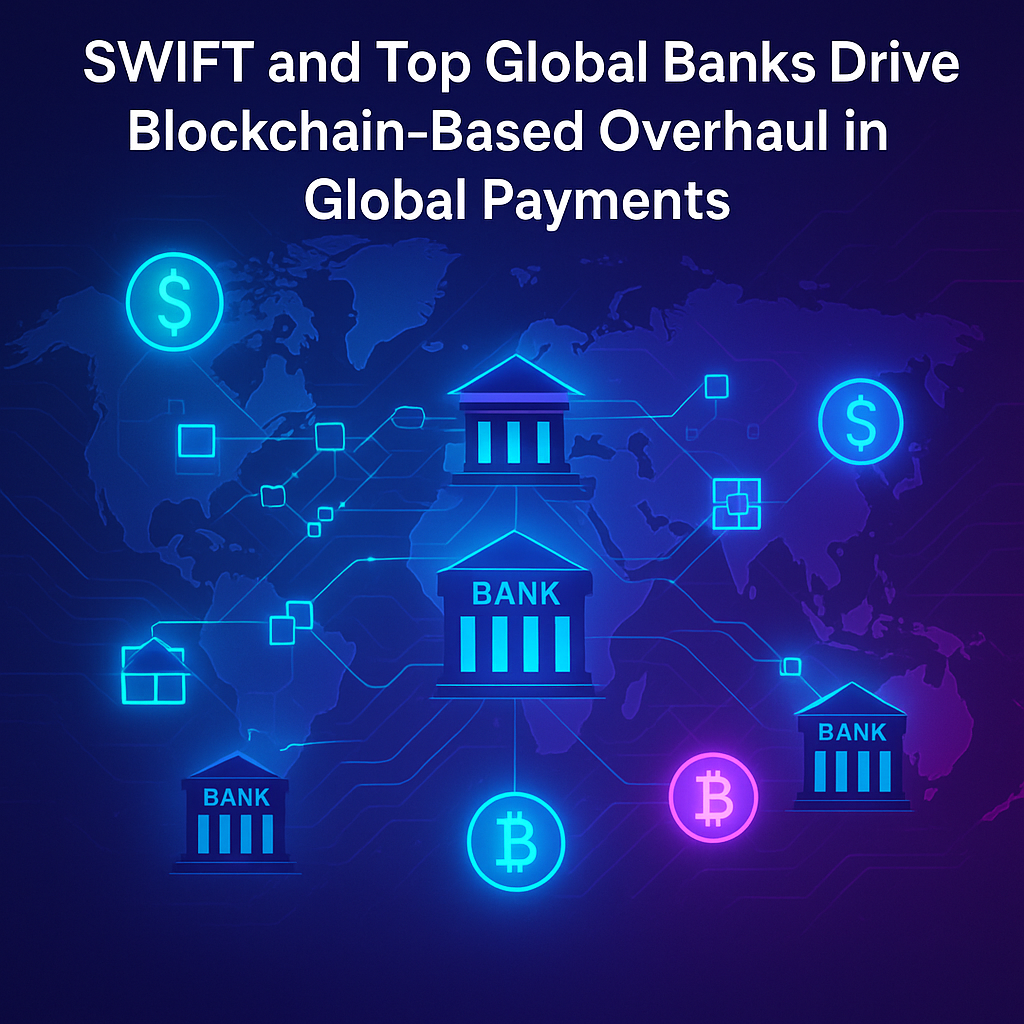SWIFT and top global banks are teaming up on a blockchain-based overhaul of the financial messaging infrastructure. The goal? To make cross-border payments nearly instantaneous, cut costs, and support digital money like stablecoins and tokenized deposits.
It’s not metaphoric — this is a turning point. The system that handles trillions in interbank transfers every day is preparing for its next act.
The Status Quo: Why SWIFT Needs Change
SWIFT is deeply woven into the world’s banking fabric. Over 11,000 banks in more than 200 countries rely on it for sending payment instructions across borders. Yet despite its reach and reliability, it has limits:
- Settlement still often takes days, involving multiple intermediaries
- Operating cost is high
- It wasn’t built for digital assets or continuous real-time settlement
To stay relevant in a world shifting toward blockchain, SWIFT can’t just add patches. It needs a rethink — and that’s where the overhaul comes in.
What’s the Overhaul Plan?
At its core, the initiative is to build a shared digital ledger — a blockchain (or ledger-like) system across SWIFT and partner banks. That ledger would:
- Record, sequence, and validate transactions
- Enforce rules via smart contracts
- Operate 24/7, including settlements for digital money
That means clearing and settlement, messaging and movement of value, all in one layer.
Pilot Moves & Technology Choices
SWIFT is already piloting a blockchain-based messaging system on Ethereum layer-2 (Linea) in collaboration with banks like BNP Paribas and BNY Mellon. The move suggests it doesn’t want just “blockchain around the edges” — it may be aiming to embed blockchain into its core messaging rails.
The initiative is also being designed to be interoperable with stablecoins, tokenized bank deposits, and central bank digital currencies (CBDCs) being explored globally.
But it’s not going live tomorrow. The timeline isn’t finalized yet. Initial priorities: enabling real-time, cross-border payments that settle instantly and reduce friction.
Who’s Involved?
Over 30 global institutions are on board, including names like JPMorgan, HSBC, Deutsche Bank, MUFG, BNP Paribas, and OCBC. These banks will help design and build this shared ledger.
Because SWIFT is already embedded across much of the world, it has a natural advantage — it doesn’t have to build a brand new network from scratch. But integrating blockchain into legacy infrastructure and aligning regulatory regimes is a huge challenge.
What’s at Stake — Benefits & Risks
The Upside
- Speed & Efficiency: Settlement moves from days to near-instant.
- Lower Costs: Fewer intermediaries and friction.
- Support for Digital Money: Stablecoins, tokenized deposits, CBDCs become native.
- Better Transparency & Auditability: Cryptographic ledgers make oversight clearer.
- Network Resilience: Distributed ledger architecture helps guard against points of failure.
The Challenges
- Scalability & Performance: Can this system handle the volume and velocity of global banking?
- Regulatory & Legal Alignment: Banks must comply with KYC, AML, cross-border law.
- Interoperability Issues: Legacy systems and new ledgers must work smoothly together.
- Governance & Trust: Who governs the shared ledger, and who controls rules?
- Security & Risk Exposure: New attack surfaces, bugs, operational risks.
The transition must be gradual, cautious, and tested — no dramatic “rip out SWIFT overnight” move.
What This Means for the Future of Finance
If successful, this overhaul could reframe how money moves globally. Cross-border payments might look as seamless as sending an email. The distinction between messaging, clearing, and settlement could blur — everything becomes more atomic.
Banks would no longer need to maintain complex correspondent relationships to move money across borders. Digital assets like stablecoins and CBDCs could be first-class citizens in this new system.
It also reshapes competitive dynamics. New players, fintechs, or blockchains that already offer fast payments (e.g. Ripple, others) get new benchmarks to measure against. But a SWIFT-backed blockchain system carries institutional trust and global reach.
Still, we likely won’t see full adoption overnight. This is a multi-year journey.
What to Watch Next
- Announcements of pilot results
- Legal/regulatory moves around cross-border digital assets
- Expansion of the blockchain ledger beyond messaging into settlement
- How banks outside the initial core group react
- Adoption curve of stablecoins and CBDCs in global banking


